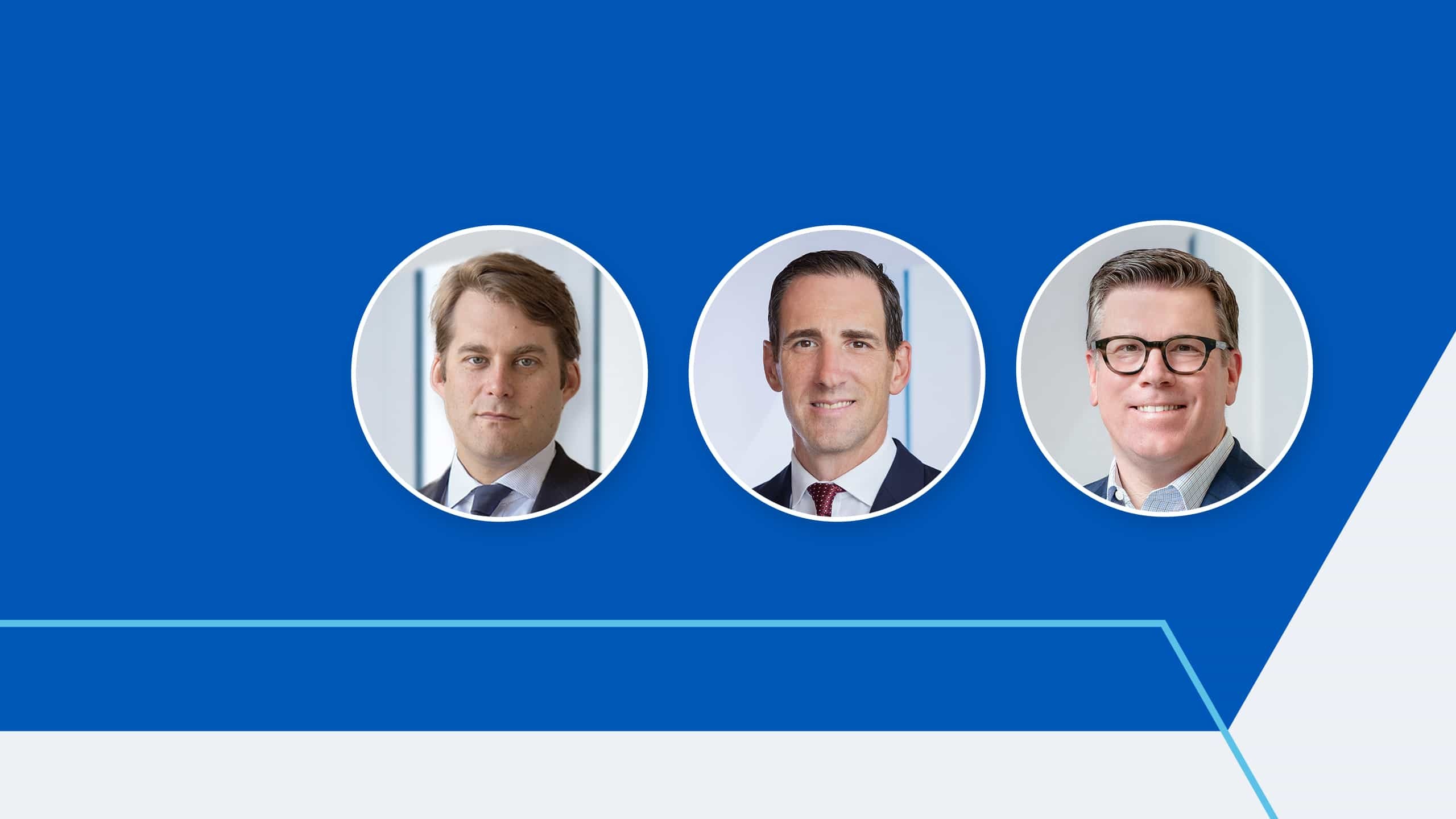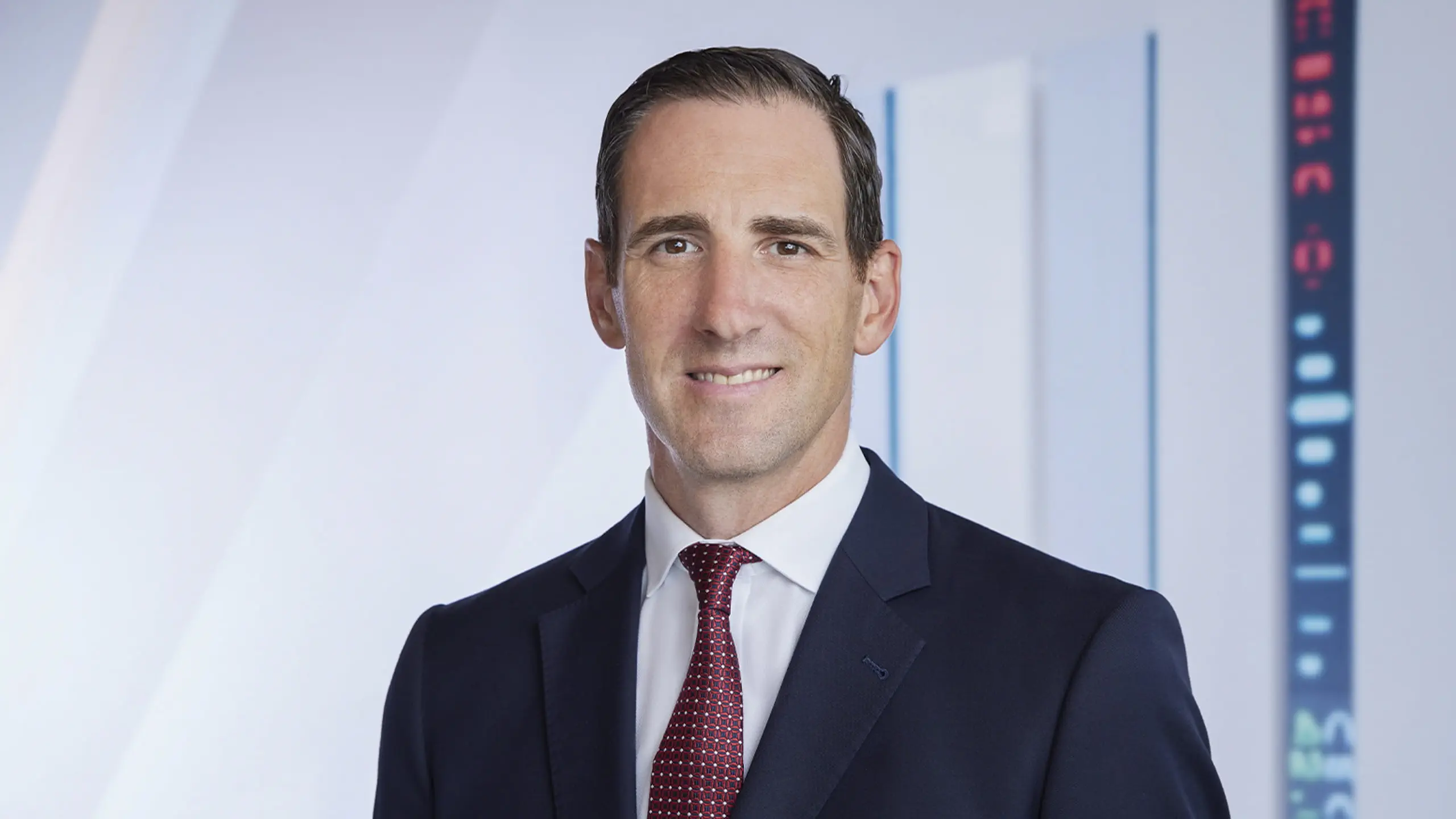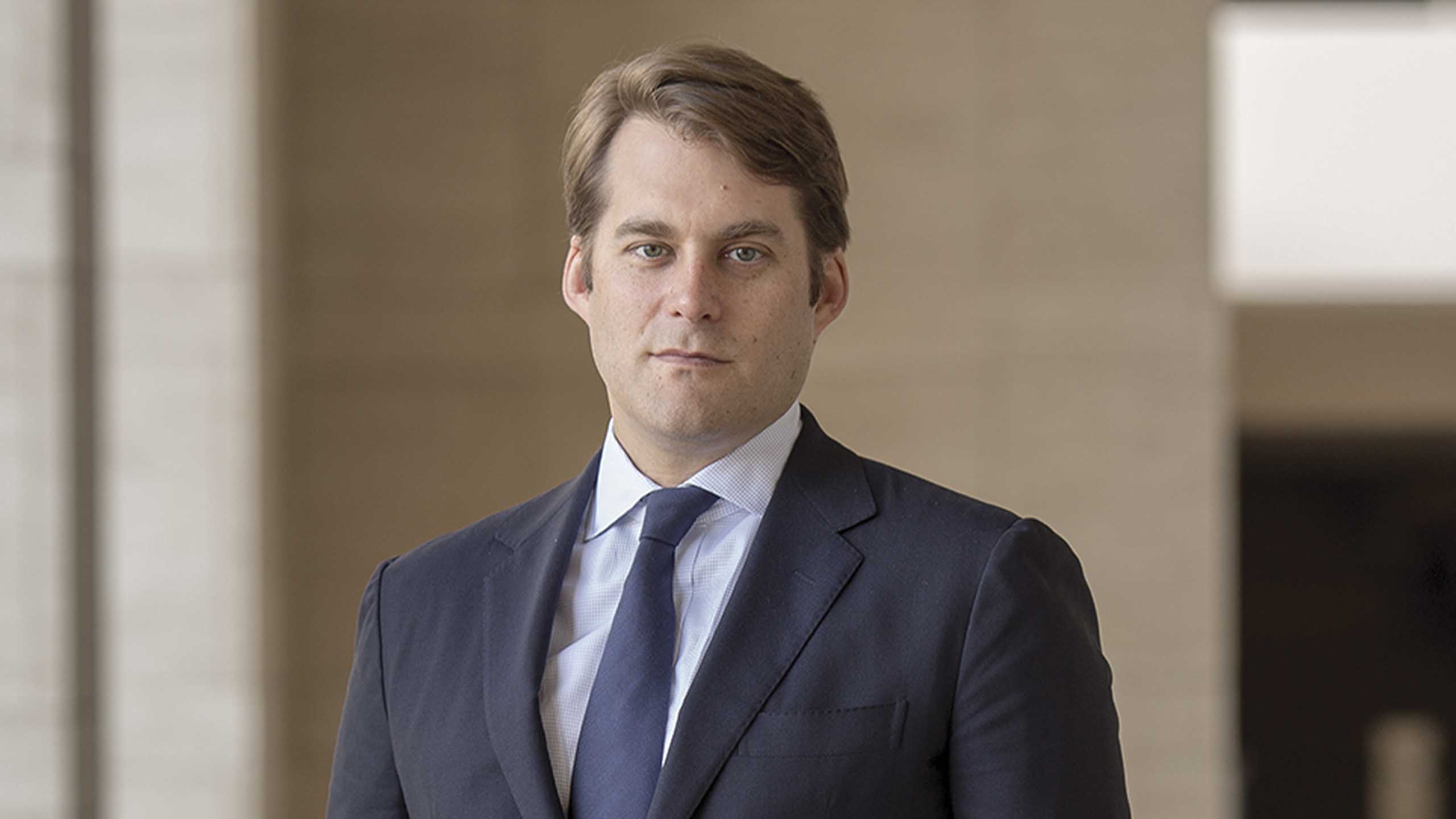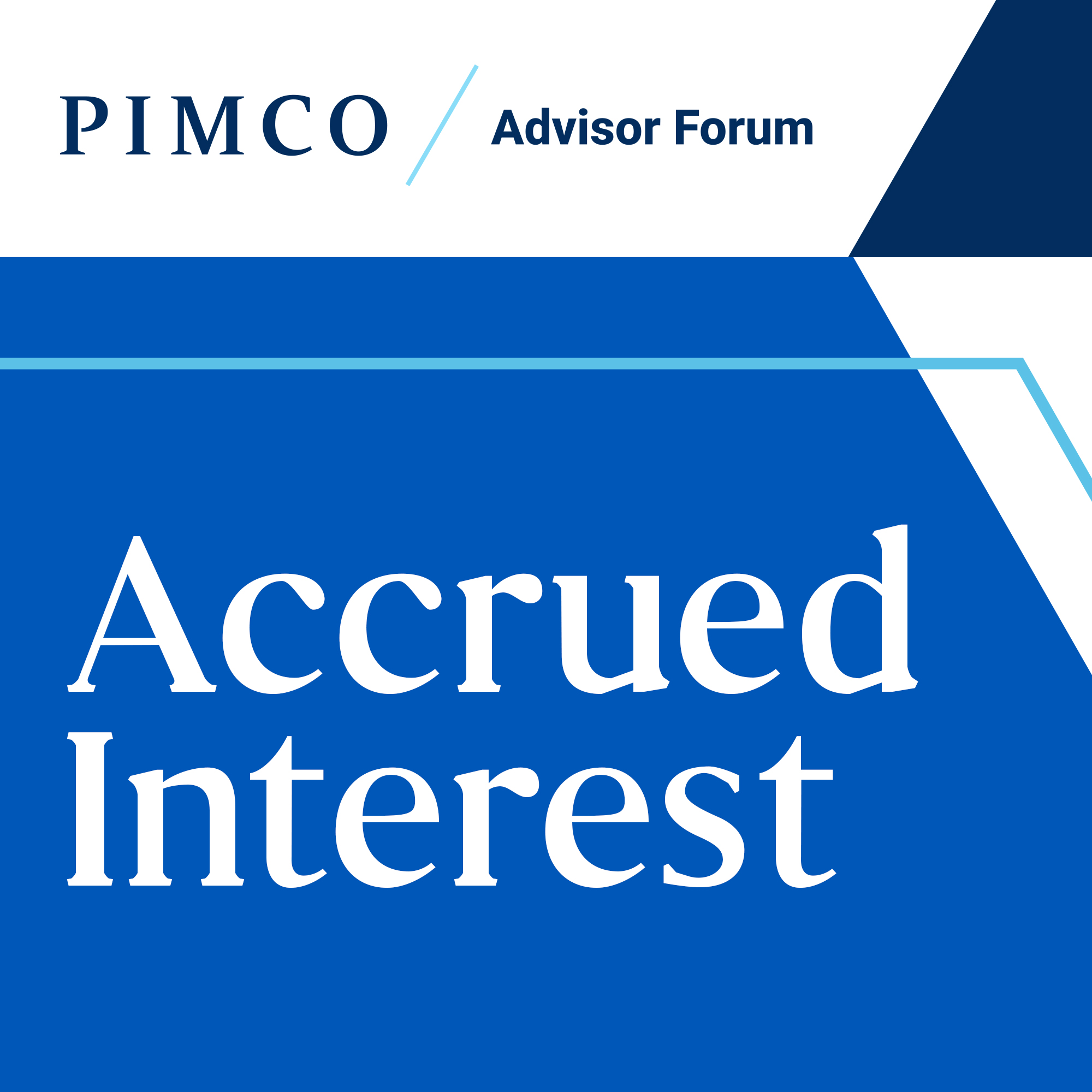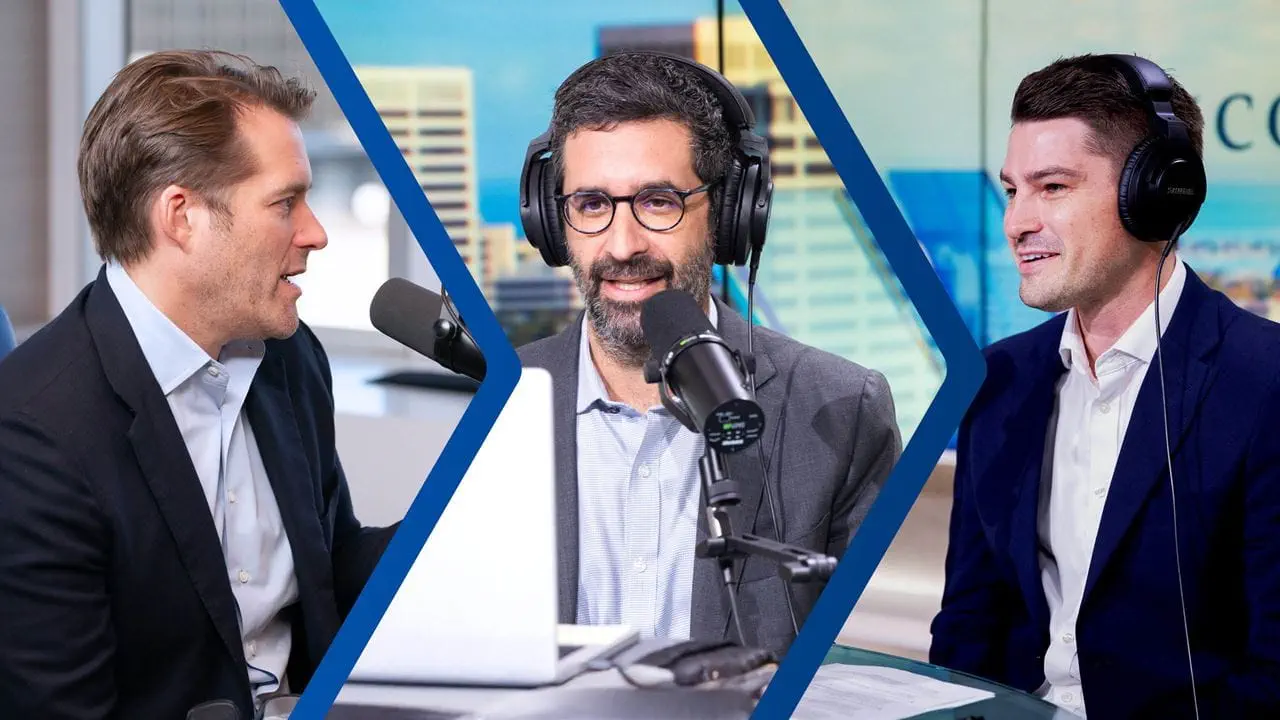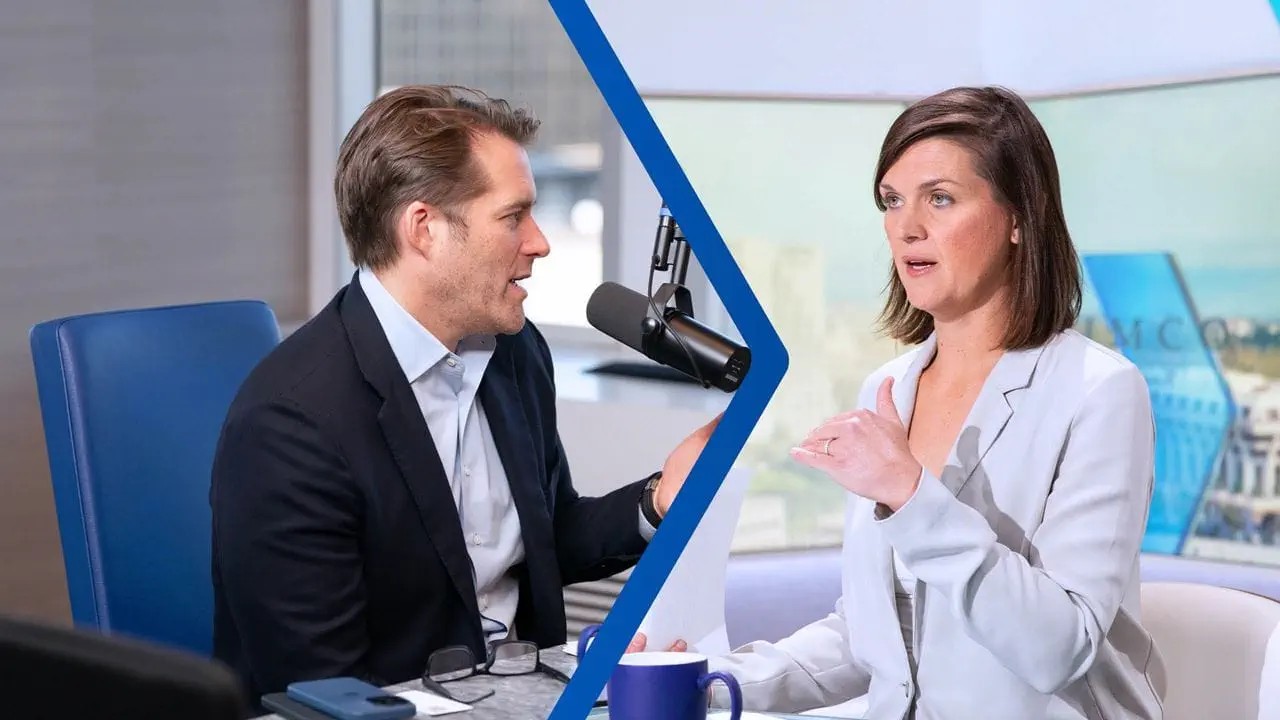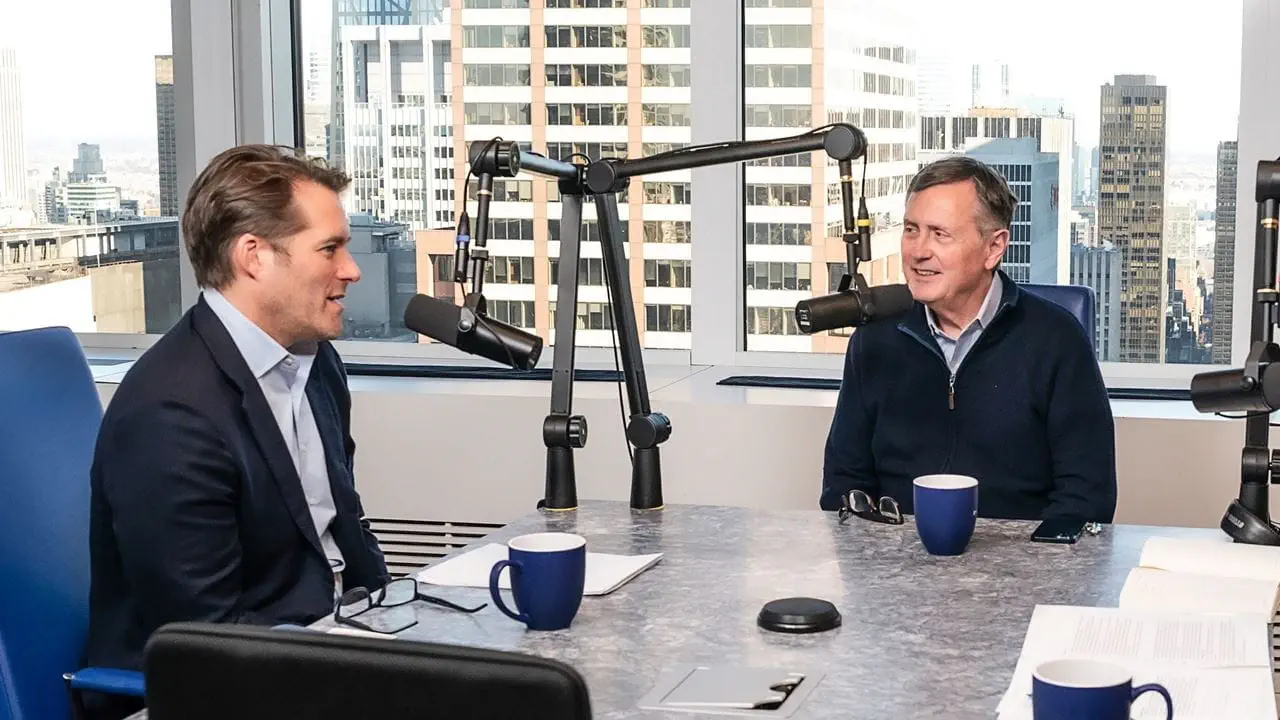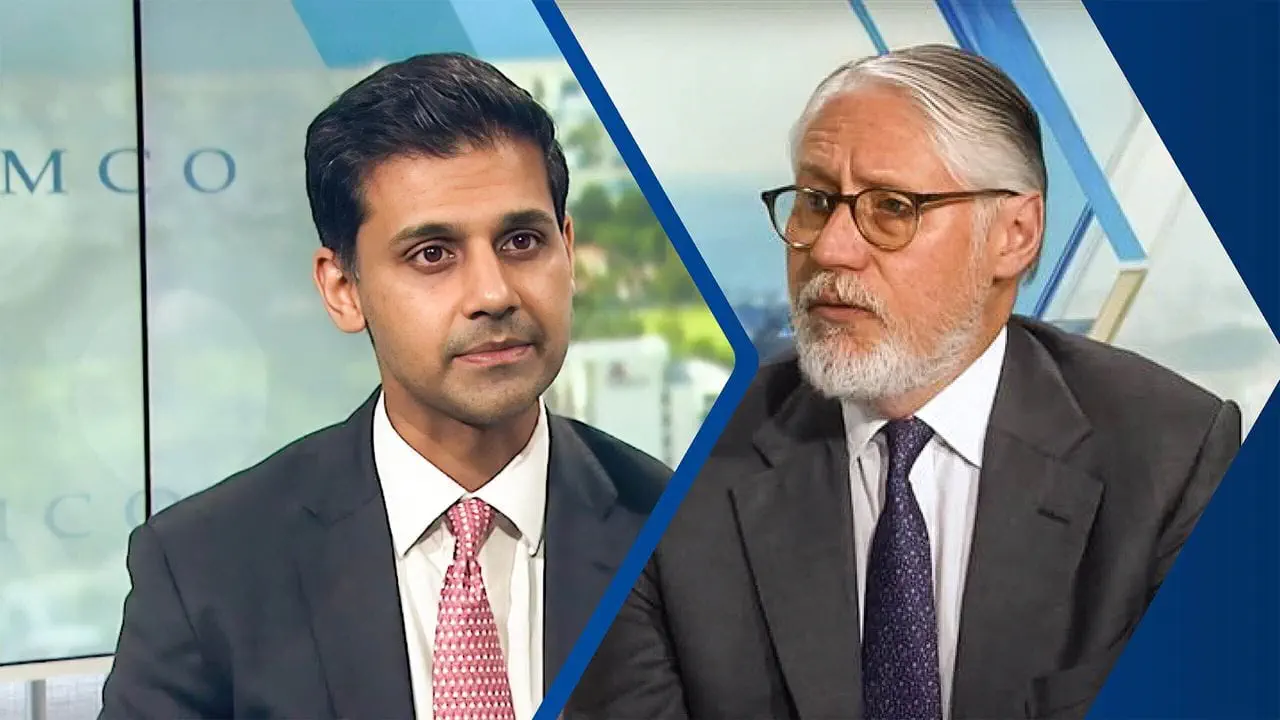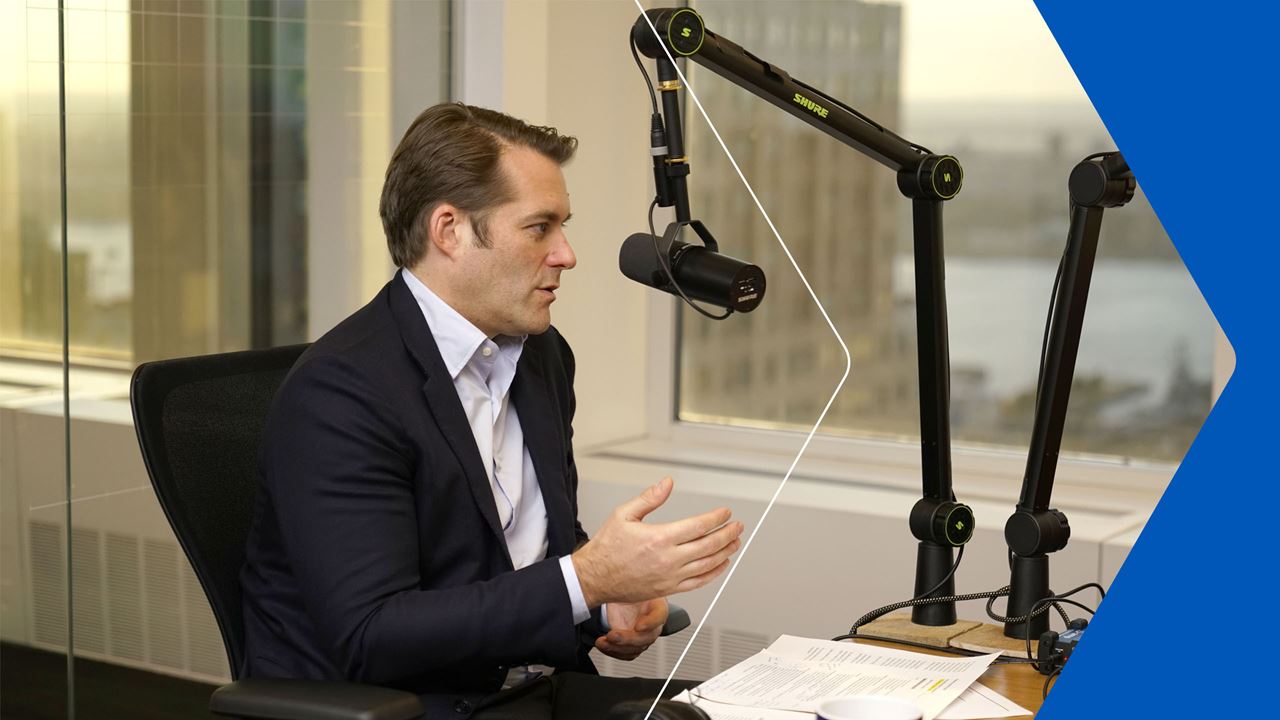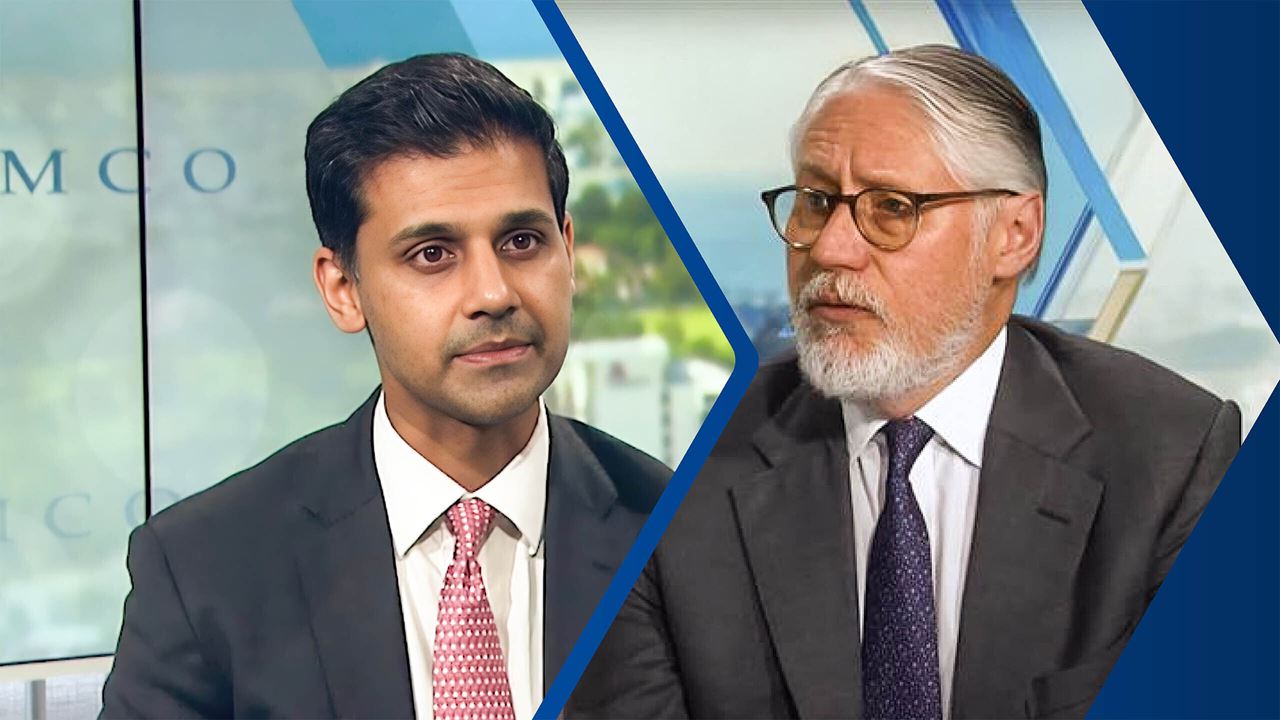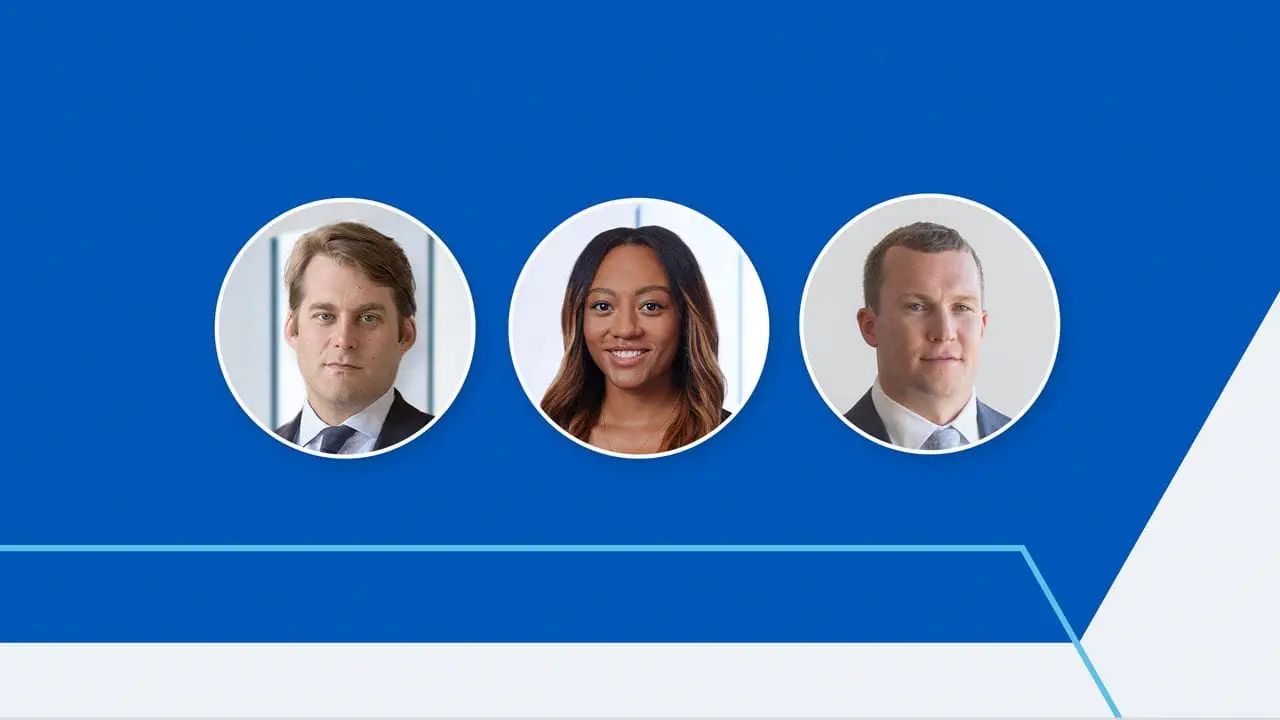Please stay tuned after the conclusion of the podcast for additional important information.
GREG HALL: Hey everybody. Greg Hall here. Welcome to another edition of Accrued Interest, Pimco's podcast dedicated to serving financial advisors and their clients. Today's conversation, we recorded it a little while ago, but, I couldn't be more excited about bringing it to you. It's all about ETFs. Specifically fixed income ETFs, and even more specifically, actively managed fixed income ETFs, which have seen a huge amount of growth over the last couple of years and really don't show any signs of slowing down.
Joining me for this conversation were Adam Brown, who leads our ETF sales effort here at Pimco, as well as Todd Mangus, who's an extraordinary account manager of ours, living out in Minneapolis, covering the Midwest and all around being a good guy.
It's a great conversation. I think you'll enjoy it. It did make me reflect as we get prepared to put this out into the world, just what a terrific time it is to be a financial advisor. And I know that sounds a little bit, you know, corny, but, you know, we spend an entire podcast here talking about just one method of delivering investment results to you and your clients. And t, that's the ETF.
You'll hear it sort of sprinkled, you know, throughout the episode, and you'll hear me pipe up on this a little bit thematically, but I just wanted to reinforce it here at the top, which is, you know, there's no one tool that is perfect for every job. And ETFs have, you know, phenomenal benefits. And we know many, if not all of you are introducing them to your portfolios as we speak. Mutual funds, you know, especially, you know, some that have been around for a long time have developed scale, you know, they have the ability to do things that, you know, maybe the more rapidly growing smaller segments of the market doesn't yet have the ability to do. That's something you've got to factor into your own thinking.
SMAs, you know, may have a role in your clients’ portfolios, depending on, tax status and the degree of customization you want. But still, I mean, just a, an excellent time to be in your shoes and to have all of this choice and all of these great tools available to you, to deliver on what your clients need. You know, the, the old saying, you know, when somebody goes into a hardware store looking for a quarter inch drill bit, it's not because they want a quarter inch drill bit, it's because they want a quarter inch hole. And we got to remind ourselves sometimes it's not always just about the tool. It's about the outcome. And we're here to provide you all with the tools that you need to deliver the outcomes that your clients want.
So in that spirit, very, very excited to bring to you this conversation on ETFs. If you are interested in what you hear, you want to go a little deeper. As always, you can visit us at pimco.com. If you identify yourself as a financial advisor, it'll take you right to Advisor Forum. That's our home for you to get the information that you need as quickly and efficiently and practically as possible.
We'll be back with you in September. Promises to be a busy back to school period for all of us as we move through the back stretch of the year, you know, kicking off, of course with the fed meeting, and then I think, just staying very busy through the balance of 2025. So hope you're having a restful and recuperative summer. And getting ready for, some, you know, really, good opportunities to make great, constructive decisions on behalf of your clients as we head into the fall.
I'm lucky today to be joined by our head of ETF sales, gentlemen named Adam Browne, who's with me here in the studio. Hey, Adam, thanks for joining.
ADAM BROWNE: Hey, Greg!
GREG HALL: And then on the line today we've got Todd Mangis, who's out in Minnesota. Todd,,,
TODD MANGIS: Happy to be here!
GREG HALL: Nice to have you with us. Nice to nice to stretch our tech skills here to have you here, on the zoom and in the field, and, you know, I'm excited to have Todd because, I was just out, seeing advisors with him in his hometown in Minneapolis. And then, my wife and I, were lucky enough to spend the weekend out there and went to the, what's it called?
It the Minneapolis Yacht Club music festival.
TODD MANGIS: Yep. We went all three days. You and, you guys were with us for two?
GREG HALL: Yeah. That's right. We had to head back on the Sunday, so we missed some killer bands, that night, but we just, we had an absolute blast exploring Minneapolis, hearing some amazing music, and my wife, came home with a bunch of Yacht Club Festival merch and, we've been showing it all to our friends, all of whom are, you know, wondering why we ended up spending a summer weekend in Minneapolis, but I got to tell him it was amazing.
It was great! You know, like, don't let the secret get out. I don't want it to be thronged by too many people.
TODD MANGIS: Right. It's the best kept secret in America right now.
GREG HALL: Yeah, yeah, I.
TODD MANGIS: Was up in Minneapolis.
GREG HALL: The festival or Minneapolis.
TODD MANGIS: But let's go with both. How's that?
GREG HALL: Perfect! All right. Well, good plug for the yacht club festival, if nothing else. All right, so, the two of you guys are here, we're going to talk about activity ETFs. Adam, let me just kick things off with you. Why are we talking about active fixed income ETFs? What's the, what are the market dynamics that bring us here today?
ADAM BROWNE: Yeah, Greg, I think we're talking about ETFs because they're pretty hard to ignore at this point. And maybe I'll sort of size the ETF market here in the US and globally for you. And then you know, we talk about some of the recent growth that we've seen there. But globally the ETF industry now above 15 trillion majority of that sitting here in the U.S where we're above $12 trillion in assets.
And while this industry is not new, it's, you know, 30 plus years old, it continues to grow, at a pace that few folks, sort of can believe is still sort of sustainable at the sort of broad numbers that we're at today. And then flows. Right. So you mentioned the last year, a record year for ETF flows, $1.1 trillion with a T coming into ETFs last year.
And we're on pace to sort of exceed that number again through 2025, through to July of 2025 or at $660 billion here in the US. The thing that I'll mention as it relates to like what is changing around ETFs, I mentioned these were launched across equity indices 30 years ago. People cut up the market into sectors and then have gone into other areas.
But the market is really coming towards fixed income, right. So today fixed income ETFs are just over $2 trillion in assets. So call it 15, 20% of the overall ETF market. But they're taking 40% of flows. And then active right, so active also sort of a later entrant to the ETF industry, you know, went through $1 trillion, late last year.
So you call it, you know, 10% of the asset base in ETFs today, also taking 40% of the flows. So the market coming right to what PIMCO does well, obviously fixed income, active fixed income. And there seem to be drivers here in place that these will be in place for quite some time.
GREG HALL: So that's interesting because I think of you know, and as we've, you know, done more in this market and you and I have talked about it around the shop, you know, I think a lot of us had to maybe dispel the notion, that that ETF is synonymous with passive, right? Because there was you know, I think what we've concluded, tell me if I'm wrong here, is that the ETF phenomenon coincided with a move toward passive in the equity markets.
And so we equate them. But actually it was sort of two separate things happening at the same time. And what you're describing now is a buildup of active strategies within the ETF landscape and to, you know, let's be fair that's happening in the equity markets as well. Active ETFs within equities have been more popular of late.
So it's not just fixed income but it's very pronounced in fixed income is what I hear you saying.
ADAM BROWNE: Certainly outsized in fixed income. And you know, sort of the point you made earlier around passive being synonymous with ETF. I think that's where the conversation starts when Todd walks into an office and speaks with an advisor and says, hey, PIMCO's in the ETF business, which isn't a new phenomenon either, but we're sort of having these conversations with folks first. You know, in a lot of cases, first time.
And so I think the assumption on the other side of the table is, oh, great. PIMCO launched some low cost passive ETFs tied to fixed income indices. And we have to sort of dispel that myth first before we get into what these are, and that these are run by the PMs that you're already aware of. Dave Hammer in the Muni space and Jerome Schneider in the short term space, and they leverage the same process and capabilities that that we have at PIMCO to deliver active solutions in the ETF wrapper.
GREG HALL: Todd. That's still the case. Is that an accurate assessment of your, typical meeting?
TOOD MANGIS: Absolutely! I think it goes beyond just having the conversation of, do you use, ETFs in your book of business? The assumption now is that they do. I mean, we've watched this, Adam and I have had of the fortune of working together in a, you know, for quite some time. So we had the front row seat for a while, and we saw these advisors move from commission based products.
At one of the other funds that we covered, and you had to move towards fee based, you know, platforms. And the early adopters of these fee based platforms definitely grabbed towards, gravitated towards the ETF side of things. And those are the largest advisors that we work with now. And now it's evolved beyond doing a comparison.
You're doing steps analysis, which we do with our clients on a regular basis. But you're, they're looking to upgrade those portfolios to having the conversation around what do we do that's active? How can we differentiate ourselves? We've already dropped the music reference. So if you throw another one, it's a difference between doing chords and doing a solo right?
Chords are the passive, broad based exposure gets you the idea of what the market's doing. But on the other side, when you're doing a solo, it really gets attention and adds nuance. And that's what clients are looking for right now. Every advisor we're asking talking to is not about what is PIMCO thinking, it's what's the companion ETF to this.
GREG HALL: Right, right, right. That's okay. So there's a there's a lot to unpack there. So, you know, one is you know, clearly just a rising general comfort level with ETFs. They've been in the market for a long time, two, is this move to advisory which any financial advisor listening to us here knows exactly what we're talking about, right.
Moving away from brokerage accounts and into more, fee based, asset management setups. And that's propelled ETF adoption. I love your, I mean, not just because I love music, but I love your reference to, you know, yeah, you've got your song structure, your chord. You know, your model allocation.
But then where are you going to source alpha, where are you going to source differentiation. And I think this is sort of an interesting, sort of, I want to separate these two things. So let's talk about why the ETF wrapper independent of what's inside it passive, active whatever. Why what's appealing to the advisor about using ETFs versus mutual funds or other types of products.
And maybe Adam I’ll start with you and then we'll have Todd keep you honest since he has these conversations every day.
ADAM BROWNE: Yeah, I think the benefits of ETFs, the wrapper some people call it a technology, are pretty well documented. The fact that there's one share class of an ETF that's available to all investors. It's the intraday pricing and trading ability of ETFs that you know, it doesn't matter every day.
But sometimes, you know, inflection points, you know, being able to know the exact price you're transacting at, in a product, matters, and can differ from date from time to time throughout the day. Tax efficiency is the biggest benefit that sort of everyone anchors to today, and the fact that ETFs are far less susceptible to capital gains and the ongoing tax efficiency and, you know, 6c-11 the SEC ruling to sort of reinforce that which is created, this onslaught of new products there.
But I do think and maybe sort of check in with Todd there. But the comment he made around this transition to advisory may not be the catalyst for the, like the benefit of ETF, but I think it shows sort of where the hockey stick growth of ETFs occurred.
And it was this migration towards fee for advice, advice on, you know, how to put your kids through college, how to afford a second home, all these other things that advisors are now doing above and beyond managing assets for clients, managing liabilities from every major client that we work with today, their jobs gotten more complex.
They've had to simplify the investment process to block trade to our own models across their book, and then obviously sort of tuck in to their taxable accounts, their taxable clients, additional benefits around tax and things like that. And I think that is the portion where, as folks migrated to advisory, they migrated to ETFs. And as Todd mentioned, the first movers there, are the massive corner office teams that, you know, have 30 people on their team now.
They're not just, you know, financial advisory practices. They're businesses, they're platforms.
GREG HALL: Todd, that ring true to you?
TODD MANGIS: Absolutely! Here on everything that, you know, that I think advisors take for granted, right. It's transparent, it's easy to transact, but it's the size and scale, which is really helped, like streamline these advisors that are growing exponentially every single year. And so it just makes it a lot easier for them to transact, a lot easier to manage a very complex book that's got hundreds of accounts and hundreds of clients.
It's a lot easier to transact. I think that's probably the biggest thing that we're encountering. Also, just the ETF landscape continues to evolve, right. So you can get exposure in just about everywhere. And you can take a more tactical approach to managing your book and business. And your model portfolio is pretty easy.
GREG HALL: Yeah, I think I mean, what I hear from you guys and what really resonates with me is, you know, if I'm an advisor running an increasing practice and I've got lots of, you know, I may have, you know, I may have a client, but I might have three trusts for that client. I might have two, you know, kids accounts, you know, kind of falling underneath that.
And I may have, you know, other subsidiary, you know, arrangements. And so the ability to transact intraday, know your price, spread that out across, you know, a multitude of accounts. If you're managing kind of similar profiles, within those accounts and just be done right. You're not waiting until the end of the day when a mutual fund strikes a Nav and you're off by a couple of cents, and then you got to go through the whole exercise again the next day, right?
So that simplicity, that's very, you know, that's very obvious to me. The other, you know, the other thing that I think is interesting on the tax front, capital gains, not something in the fixed income world that like, we spend huge amounts of time, talking about relative to equities at least, but meaningful.
And I don't want to go down too far down a rabbit hole. But I do think that the mechanisms by which ETFs can exchange securities and use baskets, things like that, that tax efficiency, that's a great, you know, kind of incremental pick up. And then in a world where, you know, as we may be facing rate cuts and fixed income investors may see total return as maybe a larger portion of their overall return.
You know, it becomes something where, you know, our ears might want to perk up a little bit. Is that a fair characterization?
TODD MANGIS: You bring up a very good point of having different types of accounts, three different trust accounts, two kids accounts. I ran into this the other day with an advisor who was having a hard time selling out of a ladder. Just an SMA and getting a getting a price transacted because he needed to mail or to wire some cash for an event that was happening with the client.
And he made the offhanded comment. This would have been so much simpler with an if I had ETF portfolios. I said, well, we should probably talk about that. So but you know, it goes to the point. And you know, as a very good, you know, bullet right there where if somebody is trying to raise cash for an event, right, events happen, that you can definitely get to more concise transaction done, you know, in a quick manner and get and take care of that need.
ADAM BROWNE: And the output here is time, right. If you have efficiency in everything that you and Todd just went through, you have time to work with more families to address, you know, due diligence for alternatives and other things that people and, you know, advisors are doing with clients today. That is an incredibly productive use of that time.
GREG HALL: Yeah. And I look, I mean, I think it's, these are all these are all great kind of explanatory factors as to why the pick up in ETFs has been as strong as it has. I think we should also, you know, let's be, you know, let's acknowledge the, you know, the incumbency I mean, the mutual fund is by far still the most popular way of accessing, you know, asset management and fixed income, active asset management in fixed income.
And, you know, I think that we all, you know, as we sit around and talk about kind of delivering the best value to our clients, you know, you got to acknowledge, like one thing is, you know, scale products, you know, like some of our mutual fund products that are significantly larger than our ETF at this point. You know, they can do things that the smaller products can't do.
And I think advisors, you know, should be conscious of that. And mostly what I see is actually, you know, I think advisors are really, you know, careful about, you know, when they value the utility of an ETF versus when they value, maybe the established track record, the size, the scale, you know, the, you know, amount of process and history that goes behind some of these more established products.
And that's absolutely correct. And we love to kind of help them think through, those issues. And the second thing is something that Adam brought up, which, you know, really is a double edged sword. I, you know, we know that investors value transparency. But, you know, I look, I think there's a real reason to ask yourself is daily transparency ultimately good for the underlying investment strategy?
And we're really careful about that here. I think, you know, our mutual fund products and the industry generally is highly, highly transparent, but not daily transparency. We are very careful, about the process and the thinking, that goes behind our security selection. And not at all convinced that, you know, all strategies should be exposed to daily transparency.
I think you got to have respect for the fact that there are quant platforms, you know, out in the market that are extremely efficient at, you know, taking data inputs and using them to create or to erode alpha in markets. And so I'll just say that, you know, it's some things that maybe on the surface feel like benefits may not actually be benefits.
And that's the kind of delicate dance I think we and advisors have to perform when we're deciding between, you know, which wrappers we want to use for which purposes.
ADAM BROWNE: To go back to your first point around mutual funds and persistent demand, and I think sort of a statistic that would sort of underscore that it's 80% of the ETF market is still equity, right? Equity moved first when this whole transition that Todd and I just talked about or we just talked about, like the viable options for advisors that at that time were passive, right?
There were not, there were some active ETFs during this transition, but they weren't that size, they weren't at scale, they weren't from, you know, many of the major players that have entered the market over the last few years. And so I think, you know, most advisors truly value active and fixed income, right? The numbers support it, you know, on average, the majority of equity managers underperform the index.
On average, the majority of fixed income, managers outperform their index. So people have held with their mutual funds through this transition while sort of hyper being hyperactive in transitioning equity assets over ETFs and passive.
GREG HALL: Yeah. Well that's and that's good. Thank you! You've brought us back to, I think kind of the second part of the question. So the first part was, you know, what's special about the ETF wrapper in the adviser's mind? And now you know, why active in fixed income.
Why is it such a pronounced move towards active, and I, you know, PIMCO you know, we talk about this a lot. It's a fervent belief of ours that, active strategies and fixed income, you know, are structurally more able to outperform, their benchmarks, than you see in the equity market. And that has a lot to do, you know, with the structure of fixed income markets, right?
I mean, the Bloomberg aggregate has 10,500 some, you know, bonds, and at the S&P 500 has 500 stocks. You know, a company issuing debt can issue senior debt, junior debt, high yield, it can be attached to a subsidiary, it can be attached to a Holdco, it can mature in two years, five years, ten years, 15 years.
Carry a coupon of x point y, y point x, z point, you know, and so just the complexity of the fixed income markets, you know, we think as always, you know, offered us an advantage in an ability to generate alpha, you know, in those spaces, you know, and you couple that with the fact that a lot of, you know, owners and traders of fixed income assets do so for reasons that, you know, aren't about generating an optimal return.
They're about diffusing liabilities over a vast time frame if you're an insurance company or thereabout, you know, managing monetary policy or currency, support, if you're a central bank, or a sovereign player. And so that again affords us a lot of ability to, you know, make security selections, take top down views that can potentially create alpha over time. And nothing about moving to the ETF wrapper changes that analysis, right?
ADAM BROWNE: Sounds like you've spent some time thinking about all of that.
GREG HALL: Yeah, well, it's sort of endemic to the seat.
TODD MANGIS: Yeah. That conversation that we always have of, why it matters to be active, right. And it's the old Minnesota saying, right. I know Adam's heard this one. It's just there's no such thing as bad weather, just bad gear.
So just to equip yourself with the right piece of gear.
GREG HALL: Man you are just, you're two for two on the analogies here.
TODD MANGIS: Well, I try.
GREG HALL: Yeah.
But I think it's important to note that, you know, maintaining that level of activity in the ETF wrapper is part also, I think of the appeal, you know, what's driven that growth in the last couple of years.
I think, I'm remiss that I, you know, we're 20 odd minutes into this and I haven't brought it up, but you, Adam and along with Kim Stafford, who's our global head of product and Tanuj Dora, who has been a key member of standing up the ETF effort within PIMCO over the last several years.
You guys just published a piece earlier this summer called Five Themes Defining Bond ETF investing today. And, you know, one of the points you know, you make in that paper is that the presence of ETFs in the bond market has actually helped to increase liquidity. And you know, this is again, like this is something that we talk about, you know, a lot at the firm.
Because there are folks in the market that would have advisors and clients believe that somehow, you know, bond markets are illiquid or that, you know, or that moving to less liquid strategies, you're not giving anything up because bond markets are illiquid. And the fact of the matter is, there are markets have never been more liquid.
And we've had previous pods where we've kind of gone into this, and ETFs are not the only reason why that is the case, but they're certainly they've been a contributor over the last few years and will probably, you know, contribute to it, going forward in terms of just more transaction volume, more price discovery, more flow.
So that's I think, that's a secondary benefit, that we're seeing from the prominence of ETFs. So let's talk a little bit though about, you know, just flow trends in the last year where have we seen, active fixed income ETFs. Do the best. Which categories have been the most popular over the last couple of years?
ADAM BROWNE: Yeah, I think there's basically two, that have been sort of really outsized, relative to the others. The first, being sort of ultra short, right, which is probably not a huge surprise to certainly, you and Todd and anyone out there. But, sort of given what was previously an inversion of the yield curve, some really, I guess an extreme aversion to owning duration in most portfolios from clients that were meeting with, people have been huddled in money markets, huddled in cash.
And I guess the first way we've been able to get folks and work with folks on moving out of some of that stuff has been into ultra short type products. So 0 to 1 years in terms of maturities. But you have more flexibility above and beyond T-bills to add additional yield, additional return. And that's been a really good outlook for folks.
And there's been also, you know, innovations around Triple A's CLOs and other things that have led to sort of meaningful growth in that ultra short category. The second, which is sort of more in the sort of year to date category than it would be sort of in the trailing 12 month, is just core and core plus bonds, right.
And I think if you look at, returns in fixed income, over the last or I guess just on a year to date basis, that ultra short categories about 2.5%, right. So you see, you know, that funds at four and a half, you're getting two and a half there, that kind of works out. You're analyzing 5% or so.
It's about double that in core bonds. Core bonds have actually been pretty good on a year to day basis giving you closer to 5%. And so I think people are again sort of starting to see some steepness or return to the yield curve, starting to see bonds, trade like bonds on a bad jobs report. That is a positive sign for folks that sort of, you know, we work with folks that know that they're going to have to move into fixed income.
And it's a category PIMCO knows incredibly well, having a huge market share in that category across vehicles, but it's effectively a category that didn't exist two years ago, right? The category multi-sector active ETF category was $3 billion two years ago. Today it's 30.
And so I think it tells us one thing, one, again it's multi-sector. So it's across everything from treasuries to high yield and bank loans. It's flexible, right. Which again, people want because they're still Snake bit from 2022.
So I think those are three areas that we've seen growth. And they'll probably be the way for quite some time.
GREG HALL: Yeah. No that's interesting. So one what that tells me is it's very logical, right. It's very rational response to markets. And it's not unlike what we've seen, you know, elsewhere in our business or in the industry broadly, you know, short term has been popular, right. A lot of advisors, very, very, happy to capture, you know, cash rates at the front end of the curve while they wait for more clarity on the path of rates and Fed movements going forward.
ADAM BROWNE: And it's worked.
GREG HALL: And it's worked and so, you know, I think while we've, you know, we've tended to encourage that they explore, you know, taking on some duration and moving out on the curve and getting ready for, you know, a world that's more characterized by, incremental cuts. We don't, we certainly don't, we don't blame anyone for, you know, being conservative and hanging out in cash.
And we'd like to encourage them, you know, to continue to exploring options. But that's been a good, you know, place for them to be. Secondly, I think, you know, is as it relates to, you know, I'd say more recent increase in interest in core bonds that fits, you know, with sort of what we've been, talking to advisors as well.
And then I love your characterization of multi-sector, because that is, you know, what we often tell, you know, our clients and advisors we speak to is the more flexibility we have, across any dimension, to use our process the more alpha we feel like we can potentially generate.
And so that innovation of bringing, strategies like that to the ETF market is, it's not entirely surprising to me that it's been as popular, you know, it as it has in recent days.
ADAM BROWNE: And there is an education gap there too, right? That is like the antithesis of what you would expect, sort of an ETF buyer ten years ago to look like, right. Someone that said, hey, we're going to own, you know, the S&P, some international, some small cap and maybe we'll sprinkle in some energy stocks or you know, some international real estate or like some themes like that.
But to sort of hand the keys over in an ETF and say, go ahead, tell me where I should be in duration, tell me how much credit I should own. Figure out how I should own mortgages, is really different than how a lot of sort of early ETF allocators thought about allocating. And so we've spent a ton of time on just education, you know, leveraging tools and things like that on where this fits in a portfolio and how it rounds out.
GREG HALL: I do want to talk a little bit about, product development, Adam. We've been, you know, I think, you know, relative to some headlines out there, you know, I think we've been relatively, shall we say, deliberate, intentional?
You know, about how we, you know, approach this. We haven't converted a lot of mutual funds to ETFs. We've been, I think, pretty measured in our pace of product development. You want to, what's the thinking behind that? You know, what are we sort of aiming for there? Why not a bigger blast yet?
ADAM BROWNE: Yeah. So I guess a couple things. Now, there's more US listed ETFs than US listed stocks. So the, so people have been very aggressive in terms of putting product into the market, right. You mentioned we've been far more deliberate, around what we're doing. I think we're trying to intersect two things. One, we listen to our clients, right.
We have Todd and our peers across the country sitting in front of clients, asking really interesting questions about how they want to continue to work with them. Go. And we take that feedback and we listen and we try to intersect that with what does PIMCO do really well, that we can package into this wrapper versus package into a general fund versus, you know, package into an SMA and other things.
And so, we as you mentioned, we've launched six products over the last three years. We did convert one mutual fund into an ETF. And I think we'll continue to find opportunities where we have client demand, where we have expertise to broaden the ETF lineup. But, I don't see a scenario where we're going to have 100 ETFs in any sort of, meaningful trip down the…
GREG HALL: Yeah! No, I mean, I think selectivity is key. And also, you know, like what you said, I think, you know, this, you know, the stars aligning between, you know, what our advisors and clients need, where we think we can do a great job on their behalf and where it fits, you know, in the wrapper that we're talking about.
I want to be, conscious of time here because I think we could talk about it's such a huge market. It's so dynamic. And, you know, and it becomes such a topic of intense interest from the advisors that we speak to. So we could probably go on for hours.
What do you think? You know, what are you looking at? You know, around the corner at. I'm like, what are the developments that you're tracking? What should advisors be looking at and reading about as it relates to ETFs or fixed income active fixed income ETFs specifically?
ADAM BROWNE: Totally. So I think, a couple things, right. So I think you're going to continue to see, you know, meaningful growth in ETFs and adoption of ETFs. That seems like a trend that's going to continue to play out. I don't think or I, you know, I think that the continued demand towards fixed income will be buoyed by number one, yields being attractive where they are today relative to what they've looked like over the last decade.
You know, potential Fed cuts in the future is another sort of, you know, catalyst for continued fixed income demand. And then, you know, just the product that has come into the active ETF space since, again, sort of the SEC past the ETF rules 6c-11.
GREG HALL: Five that was 2019.
ADAM BROWNE: Yeah, five, six years ago, created this onslaught of new products, right, and new active product. And that product is coming of age, right. It's coming of age in terms of track record. It's coming of age in terms of assets and trading volume and tighter spreads. And now those products are more viable than they have ever been.
And so I think that'll be a continued, adoption of sort of active fixed income. So I think that will continue, to, I think you'll see firms continue to push the bounds on the ETF wrapper, right. I think, you know, crypto is a great example of that. We don't have a horse in that race, but crypto ETFs were approved at the end of 2023, effectively launched at the beginning of 24.
And, you know, at the last number I saw was $150, 160 billion, that have migrated into ETFs that own crypto. And there's been no, not just Bitcoin, but other cryptos that are coming into that structure. And not only are they, you know, investors finding this, but advisors are now managing and giving advice on crypto exposures across a broad platform.
So I think that's another example of like something, five years ago we were talking about not on our radar, right, but coming here. The other big sort of thing that I think are two more things, is private credit and alternatives and things like that coming into the ETF vehicle. I do think obviously, there's a huge push right now to get, alts in the hands of more investors here in the US.
Which I think is a positive development. I don't know that, you know, like truly illiquid real estate and other things should be sitting in a 40 Act vehicle. But again, like there's benefits to not marking, to market some of these strategies and investments. And you know, bringing that into a structure that's going to price intraday and have to settle T plus one.
We'll sort of see if that plays out. There's been a ton of news. There's been you know, sort of a lot of excitement around this development playing out in ETFs. Assets haven't necessarily followed yet, but I think you'll continue to see development there.
GREG HALL: Yeah! It's an interesting, I mean that one's an interesting dynamic. And I think we should be, you know, we will be careful and how we describe it because I do think, you know, or at least in my personal view, you know, you would make the comment earlier, you know, about how, you know, the ETF wrapper that trades intraday, you know, can help to shine a light and give actually price discovery and price transparency to sections of the market that didn't previously have it.
And so there's a world in which you applaud efforts to, you know, have a proxy for the value of a private credit portfolio that where market participants can effectively vote, you know, on whether they think it should be at a premium or a discount. On the other hand, and maybe this is just like a little bit of cynicism on my part.
I think one of the reasons some of those solutions haven't taken off yet, is that a lot of what, a lot of advisors and a lot of clients, maybe is unconsciously, but and some quite consciously value about these private credit products is the fact is the smoothing effect of the accounting rules which allow for mark to model.
And so, if you inject volatility into that equation, you can see it being very unappealing to somebody who valued, the lack of movement in the Nav as a feature, not a bug of that investment. And I think that's something that, you know, the industry needs to kind of sort out, for itself, but that you're right.
That's a really interesting test case. You know, crypto has been a very interesting test case, and shares a theme, actually, you know, you mentioned the 2019 ruling by the SEC, but obviously, you know, this year we've seen the genius act and you've seen, you know, a little bit more regulatory clarity around some of these things that's actually fueled, you know, an increase in take up, in the marketplace.
So that's all fascinating. You know, the other thing, you know, we haven't talked about is, of course, the potential for ETF share classes of mutual funds. We'll leave that to the side, I think, for this conversation as that sort of works its way through regulatory channels. But for a global audience, you know, should note, you know, that other countries, you know, Canada, Australia, you know, have really vibrant markets in which, investors can simply purchase an ETF that maps to, an existing mutual fund as a share class of that mutual fund.
And that may be something that we're contending with in the US market at some point in the next 12 months, and that's going to create all sorts of challenges and all sorts of opportunities, right?
ADAM BROWNE: Totally. And it's going to take, I mean, what we're hearing from clients, partners, platforms is, it's going to get passed at some point, but there's a lot to figure out. And sort of the pace of adoption of that share class at some point in the future, will take some time for the industry to be able to sort of absorb.
So what to your point, we'll see how it evolves. In the months and quarters.
GREG HALL: Todd anything we're missing from, you know, folks, you speak to that we ought to touch on before we sign off here.
TODD MANGIS: Yeah, there was one big glaring miss that I didn't hear, because we talked about flexibility, transaction. You know, ability to have transparency is munis. You know with the growth in that the taxable asset base that our advisors are working with. I'm getting a lot more questions about munis and, you know, and whether or not they fit within an ETF wrapper.
And the answer is, yeah, they do. They definitely make sense. It's easier to deploy across an asset allocation, much easier than a single bond or a ladder. And sometimes a ladder just doesn't work. And the big thing about that is just the efficiency that you can gain municipal exposure, into a product mix without having to go hunt down bonds that may or may not be mispriced, right.
TODD MANGIS: And then probably the last thing is just the fear of missing out. I think there's more and more conversations that we're having with clients. You know, advisors are coming to us. Should I be using ETFs? You know, it goes back to what you said, Adam. And I think Greg even touched on it was education, right. And just have a conversation.
GREG HALL: Yeah I think, you know, thank you for bringing that up because, you know...
ADAM BROWNE: It’s good for him to keep us honest, right?
GREG HALL: Yeah, it really is. But yeah, because we talked about some of the sectors that, you know, have been most popular. And I, you know, munis is in its own you know, munis is kind of the one sector of fixed income, really, like year to date over the last 12 months that just hasn't, you know, hasn't had the same, you know, performance tailwind that some of the sectors we've been talking about have, whether it's multi-sector short term.
And so that should be piquing advisor interest. And then the way that people own Munis is just it's a little different than the way they might own, some other strategies out there. And so there's a different comparison that takes place when they think about ETF versus how they hold it in a ladder, how they hold it in a mutual fund, the tax consequences, all that stuff.
So that's a really good point, Todd. Thank you for throwing that into the conversation. And, you know, we'll we're probably overdue for a muni conversation with Dave Hammer, our portfolio manager in that area on the pod, you know, given some of the opportunities opening up there. So we'll get that on the schedule.
But for now, let me just thank you both for joining us. Great conversation! I really hope, advisors listening to this, investors listening to this, can take a lot away from this conversation. As always, if there's anything you want to follow up on, please do visit us pimco.com.
If you identify yourself as a financial advisor, you'll be taken to Advisor Forum. Advisor forum is our one stop destination for you as an advisor, to get the information that you want from PIMCO in a quick and efficient and practical matter. And everything that we've discussed today, you can find, the piece that we published, that I referenced, that Adams, an author on.
You can find any other, research pieces that you might want to go a little bit deeper on. Please also reach out to, your sales coverage at PIMCO if you've got further questions.
We didn't talk about specific strategies on this podcast, but if you wanted to go a little bit deeper you can of course, do that on the website. But what I hope is that, you as advisors can take this conversation, inject some of the takeaways into your practice. And just have, you know, better, more, constructive conversations with your clients about what's changing in the landscape and what they ought to be thinking about.
Finally, I will say this, please if you enjoyed listening today, if you enjoyed listening to a previous podcast but didn't like today, either way, if you could hit the subscribe button, let us know you're out there. It really helps us, you know, bring content to you, and invest more deeply into this platform.
We will, see you next time in September. We have an action packed fall ahead of us. And so, really, really looking forward to, what the world will bring and being able to talk to you about it on the podcast. Thanks so much!
From This Episode
- Introduction
- The Rise of ETFs – How Did We Get Here?
- From Chords to Solos: Why Active Bond ETFs?
- ETFs are Changing the Dynamic in Fixed Income
- Attractive Opportunities in Active Bond ETFs
- PIMCO and ETF Product Development
- What’s Around the Corner for Advisors?

